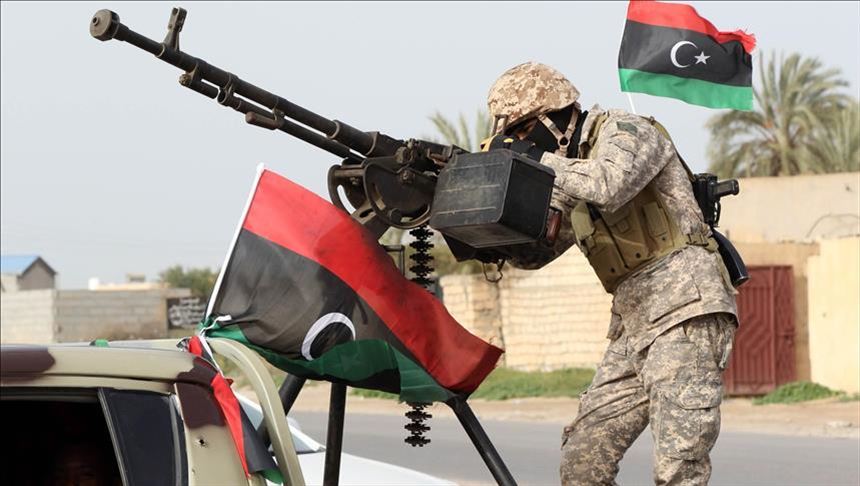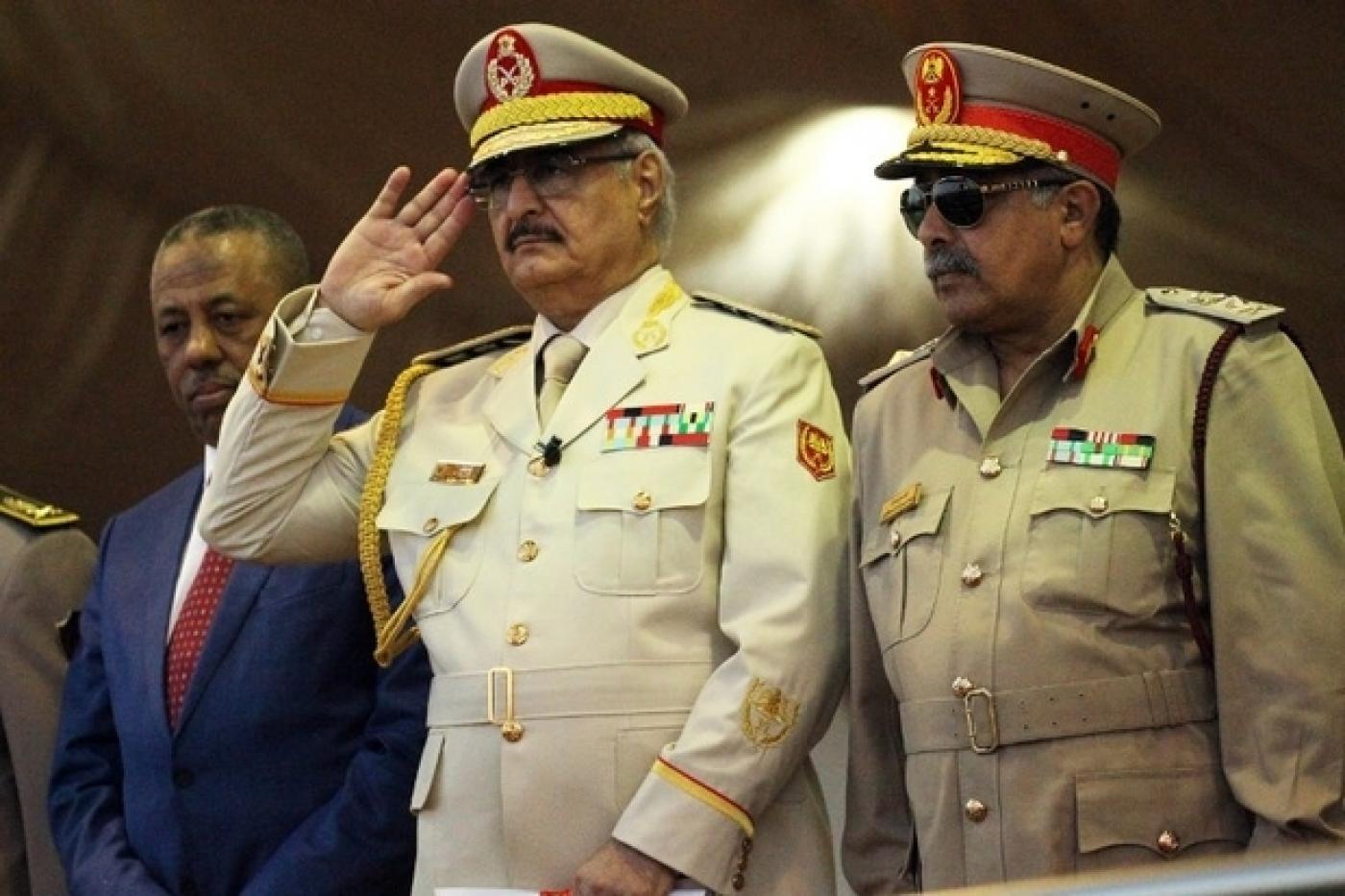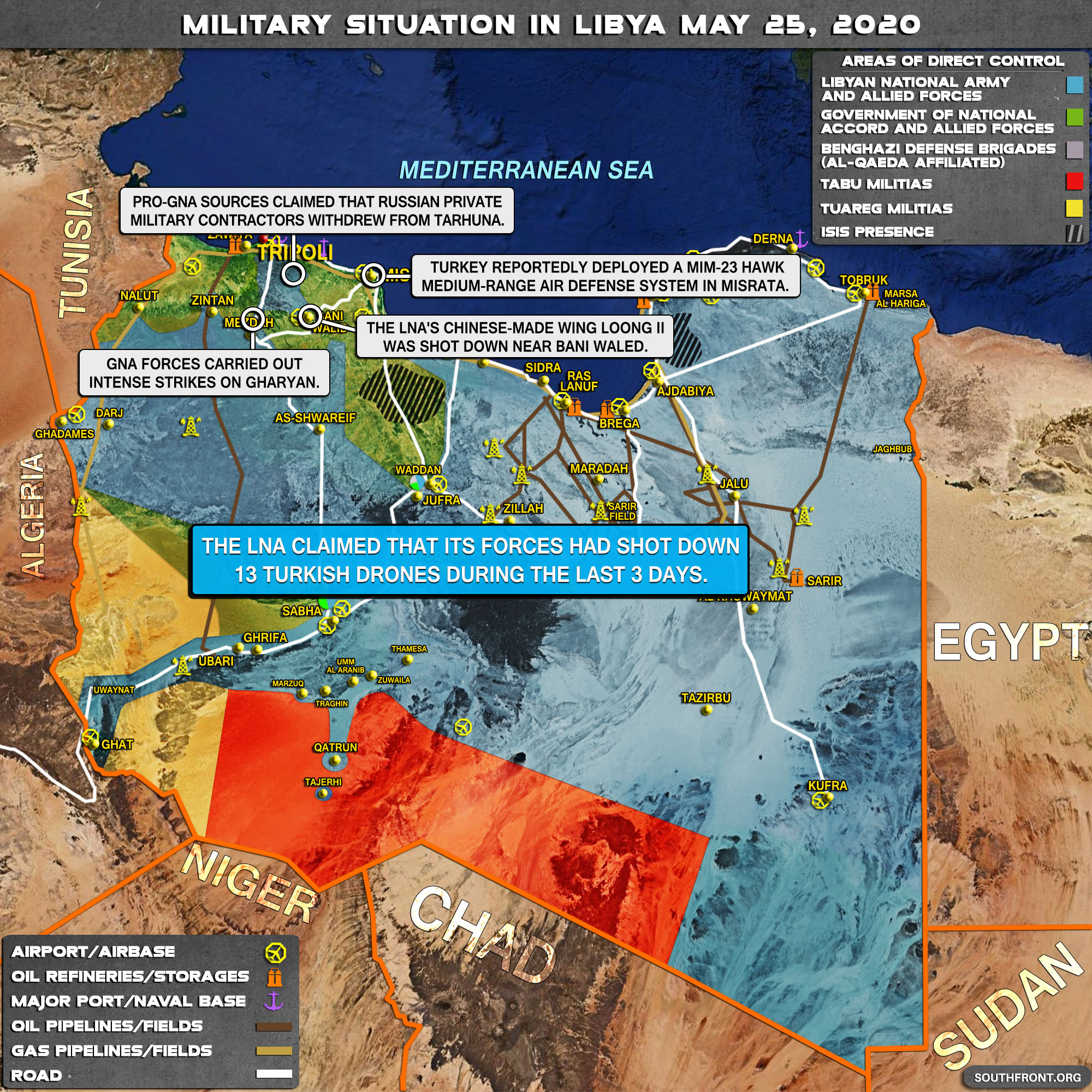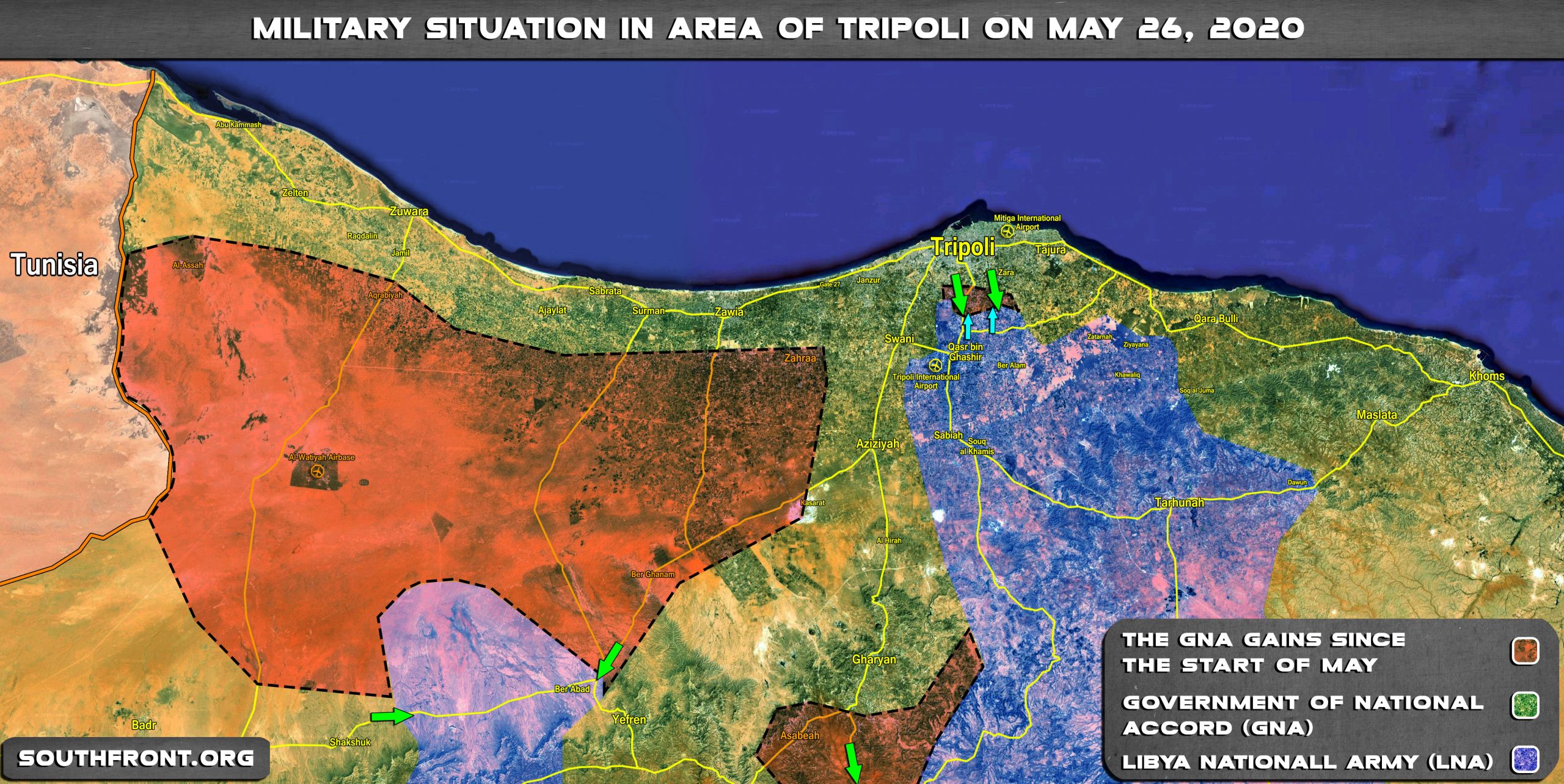The current international conflict in Libya dates back to the armed intervention of the United States, some of the NATO member states and their allies against the legitimate government of Libya, led by Muammar Gaddafi in 2011. The overthrow of Gaddafi was prepared by external forces in advance. Particular emphasis was placed on creating a large-scale disinformation curtain for organizing diplomatic support to anti-government forces.
The main interested parties were the USA, United Kingdom, France and Italy. They had several main objectives:
- The destruction of a strong independent state on the southern coast of the Mediterranean Sea;
- Capture of the oil and gas fields throughout Libya;
- Relief of the debt that they owed Gaddafi.
The active phase of the conflict began with the unrest in February 2011, which quickly took the form of a civil war. NATO countries and their Arab allies directly supported the anti-government National Transitional Council (NTC) and Islamists.
October 23rd, 2011 the last government bastion – Sirte – fell. Muammar Gaddafi was killed without trial by militants. Part of the forces loyal to the government turned to guerrilla warfare.
The foreign sponsors of the coup did not achieve the main economic goal – to obtain the stable control over the oil and gas fields of Libya. Internal contradictions began. The period between 2011 and 2014 is characterized by incessant armed clashes between various forces.
The current stage of the confrontation began in May 2014, when the Field Marshal Khalifa Haftar, the leader of the Libyan National Army, announced the start of a large-scale operation against forces of the Government of National Accord (not to be confused with the National Transitional Council back in 2011) and Islamist groups, including ISIS. An importanf factor is that the Government of National Accord (GNA) is not recognized by the country’s highest legislative body.
The modern Libyan National Army (LNA), commanded by Khalifa Haftar is largely the successor to the Armed Forces of the Libyan Arab Jamahiriya, since it was formed by the Transitional National Council of Libya in 2011, from the late Gaddafi’s military personnel, and from parts of the opposition National Liberation Army.
The LNA supports the supreme legislative body of the State legally elected democratically in 2014 Libya – the House of Representatives. It’s located in Tobruk. In March 2015, the House of Representatives officially appointed Haftar as Supreme Commander of the Armed Forces of Libya.
Following the events of 2011, the Libyan Armed Forces were not a singular entity, but were separated into two factions:
- The first and the main is subordinated to Field Marshal Haftar since November 2011. This was legitimized by the House of Representatives. Formally the LNA represents the interests of the House of Representatives and prior to that to the National Salvation Government, but also had its interests as a group of professional officers;
- The second factin is under the command of Suleiman al-Obaidi, directly subordinate to civilian authorities: before the 2014 elections – the National Salvation Government; after – the House of Representatives.
In March 2015, both factions were united under the command of Haftar. Fighting continued until the signing of the 2016 Skhirat Agreements, according to which a joint Presidential Council was to be formed.
In March 2017, the House of Representatives suspended the Skhirat Agreements of December and the powers of the Presidential Council, led by the GNA leader Fayez al-Sarraj. The fighting between the LNA and the forces loyal to the GNA, more specifically to al-Sarraj and various Islamist leaders, resumed.
Furthermore, in August 2017, after the meeting of Haftar and al-Sarraj in Paris, the LNA suspended operations against forces of the GNA.
At the same time, it continued to conduct active hostilities against other groups of radical Islamists. However, it became more difficult to separate the radicals associated with al-Qaeda and ISIS from the supposedly “moderate” supporters of the Tripoli-based government of al-Sarraj. The situation is a sort of the earlier version of Syria’s Idlib.
On January 5th, 2019 Field Marshal Haftar announced the beginning of another large-scale operation in the southwest of the country. On April 4th, 2019 the LNA received an order to launch an offensive in Tripoli to “liberate the city from terrorists.”
In early 2020, Turkey officially intervened into the conflict on the side al-Sarraj and the Islamists. On January 1st, 2020 four aircraft with members of Syrian militant groups from Idlib landed at Tripoli International Airport.
With a complete change in the nature and picture of the civil conflict in Libya, in 2020, like in 2011, the collective West, represented by NATO countries, actually acted on the side of radical militants, formally on the side of the head of the presidential council, the head of the GNA, infiltrated by Islamists, Fayez al-Sarraj.
The various parties in the conflict in Libya and the respective armed forces are now clustered around two blocs.
- The first is the LNA and the House of Representatives that can be characterized as conditionally “secular”;
- The second is the GNA bloc (conditionally “Islamic”).
Anither force is various ISIS and al-Qaeda cells around the country.
The forces they include are the following:
The LNA and the House of Representatives
- Regular ground forces, consist of two mechanized infantry, one tank and three artillery brigades, as well as one brigade of special forces “Saiga”, two brigades of the “Deterrence force” numbering approximately 7,000;
- Independent groups formally integrated into the LNA – up to 12 thousand fighters;
- Foreign military contingents consisting of private military contractors including Sudanese and Chadians;
- Zintan brigades from the city of Zintan. This is an independent power, currently allied with the LNA;
- Petroleum Facilities Guard (PFG) is mostly allied with the LNA. The PFG controls fields and refineries in the center and in the east of the country;
- The Egyptian Armed Forces as a force directly involved in the Libyan conflict. According to various sources, Cairo has up to 3000 instructors and military personnel involved in the conflict.
The GNA bloc
- The Big Tripolitan Quartet, on which al-Sarraj personally relies: Special Deterrence Forces, Tripoli Revolutionary Brigade, Central Abu Salim Security Forces and Navashi Brigade. These groups were given an officiall status by the Ministry of Internal Affairs.
- Forces loyal to the GNA,including the 7th Kani Brigade of the Presidential Guard from Tarhuna, military formations of the Avalyad Suleiman tribe;
- Misrata forces – various groups from Misrata on which Vice Prime Minister of the GNA Ahmed Maiteeq relies. This is an independent force currently allied to the GNA;
- National Mobile Forces consist primarily of Amazigh;
- Ghwell’s Libyan National Guard – allied to the Misrata clans and thus to the GNA;
- Shura Council of Benghazi Revolutionaries;
- Syrian mercenaries and militants, brought in by Turkey – approximately 5,000 people;
- Turkish Armed Forces, as a force that’s directly involved in the conflict.
The LNA is supported internationally by Egypt, the UAE, Russia and Saudi Arabia. The GNA is supported by Turkey, Qatar, and NATO member states in the face of USA, Italy, France and the UK.
ISIS has three separate formations in Libya:
- Wilayat al-Fezzan in the province of Fezzan in the desert in the south;
- Wilayat al-Barqah in the province of Cyrenaica in the east,
- Wilayat al-Tarablus in the province of Tripolitania in the west.
Estimates of the total number of active members vary from 800 to 5,000.
After the defeat from the LNA, the Ansar al-Sharia group virtually disappeared, and became a part of ISIS. ISIS also included part of the fighters of the Shura Council of Dern and the Shura Council of Sirte. ISIS is a constant adversary of the LNA and situational opponents of the GNA. NATO countries, in their fight against ISIS cooperate with both the LNA and GNA.
The conflict of interests of the internal actors in Libya is due to clan and tribal contradictions that have existed for decades. Various clans and groups seek to establish or expand control over:
- Territory and population;
- Distribution of income from extraction, processing and sales of oil and gas resources.
The Libyan oil sector is able to export about 34 million barrels of oil per month, which corresponds to revenue of $1.2 billion per month at current prices. Actual exports are significantly less. At the beginning of the year, NOC exported from 1.2 to 1.8 million barrels per month.
The interests of external actors are to obtain or maintain control over Libyan oil and gas facilities on dumping conditions, as well as control over the direction and volume of exports.
A related task arising from this motivation is to counteract the formation of a single “hostile” government oriented either towards the national interests of Libya and/or to the interests of competing forces.
The external forces can be separated depending on their interests:
- Egypt, Russia and the UAE. These countries have related interests and seek long-term stabilization of the situation in the region with the strengthening of the sovereign power of a single Libyan government.
-
- For Egypt, it is an issue of national security to counter Islamists, including forces affiliated with the Muslim Brotherhood and al-Qaeda, in Libya.
- For Russia, the economic component is important. Tatneft and Gazprom operate in the region. The Russian Federation is interested in construction and infrastructure contracts, the Libyan arms market. Also, for the Russian Federation, the sensitive topic is the fight against Islamic fundamentalism and radicalism “on distant approaches.”
- The UAE in Libya solves a whole range of issues, both of an economic plan, and strengthens strategic cooperation in the triangle of Russia-Egypt-UAE, which, at least, will strengthen the influence of the UAE on the Arabian Peninsula.
- Turkey is nterested in a long-term stabilization in Libya, but under the control of “moderate” Islamists from the GNA. In the absence of its own energy resources, escalating international relations and the global crisis, Ankara relies on Libya as its potential oil province.
- The USA and the UK. Royal Dutch Shell, BP left the country. For the US and UK, instability in Libya is now beneficial, which plays into the hands of the US oil and gas sector.
- Qatar and Saudi Arabia. They pursue mainly situational goals. However, there is also the geopolitical interest of the ruling clans of these Islamic monarchies. The Qatari clan continues to secretly support ISIS, the Saudi clan supports al-Qaeda as instruments of geopolitical influence.
- France (Total), Italy (Eni), Spain (Repsol) were forced to suspend work in early 2020 on a significant part of their objects in Libya. Back in 2019, Eni and Repsol withdrew their staff from Libya. The interests of these three players are to stabilize the situation under the control of a weak government in Tripoli, that is, a return to the “status quo” from 2017-2018.
The above review of the forces and interests of the various parties to the Libyan conflict, at first glance, demonstrates the extreme difficulty of resolving the conflict. However, there are at least two scenarios that the situation could be solved:
- A military loss of one of the sides.
- The defeat of the LNA forces is possible with the further and increasing Turkish military involvement in the conflict, with the simultaneous factors: Egypt’s refusal of a direct military support of Haftar forces, the UAE stopping of its financial support, and the Russian Federation stops its diplomatic support. In this case, if the number of pro-Turkish militants is brought up to 7-10,000 and the Turkish Armed Forces use their ground forces (5,000-10,000 military personnel) with massive aviation support (UAVs), the GNA’s military victory will be achieved before the end of 2020. Accelerating events may take place that would cause allied NATO countries to provide an air support to GNA forces.
- The defeat of the GNA forces is possible with a significant increase of a direct military support from Egypt, the most militarily capable Arab state. Using the geographic location and Haftar’s forces as advanced units, the Egyptian army and air force are capable of inflicting a crushing defeat on the GNA units and pro-Turkish forces in a very short timeline. Even in the case of a massive air support, without an army ground operation, Haftar forces will be able to regain the positions lost in May 2020 and increase the pressure on Tripoli. If the intense conflict continues until 2021, Turkey will be forced to either retreat or reduce the intensity of participation due to economic reasons.
- Reconfiguration of the forces supporting warring factions.
- France, Italy and Spain, realizing that in the event of a military victory by Turkey or an ongoing civil war, they will lose a significant part of the oil and gas facilities and the export market of Libya, put pressure on or refuse to support the GNA. There are a number of tools for this, from the cessation of financing and the embargo to the threat of freezing of accounts of the al-Sarraj faction. In this case, Turkey will find itself in an extremely difficult situation. It is likely that it will have to reduce the military aid to the GNA and will be satisfied with limited control in the western part of the country. The situation will stabilize and return to the status quo of 2017. In Libya, there will actually be two states. Success is even more likely if EU (led by Germany) and UN bureaucrats are actively involved in the implementation of this scenario. Such a development of the situation does not contradict the Russian agenda for the conflict.
MORE ON THE TOPIC:









